Priestly House (1730)
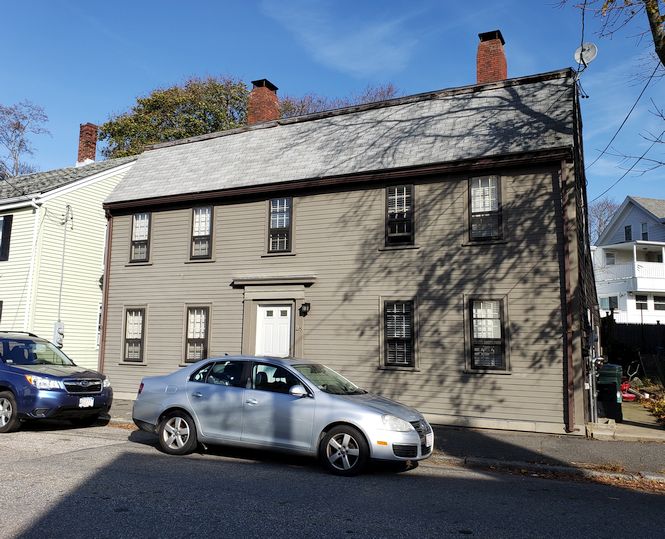
The gambrel-roofed colonial house at 26-28 Pine Street in Gloucester is listed in the Massachusetts Cultural Resource Information System as the Priestly House, built in 1730.

The gambrel-roofed colonial house at 26-28 Pine Street in Gloucester is listed in the Massachusetts Cultural Resource Information System as the Priestly House, built in 1730.
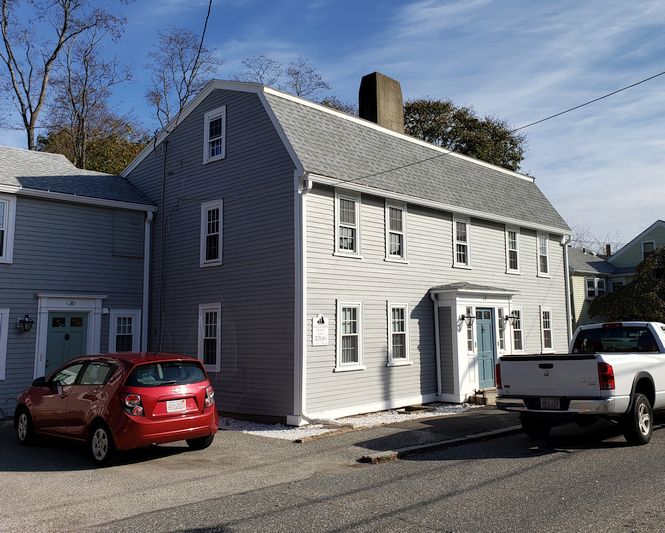
The house at 18-20 Pine Street in Gloucester is listed in the Massachusetts Cultural Resource Information System as the Stacey-Nash House with a construction date of 1730. A sign on the the house indicates it was the home of Benjamin Stacy, a tanner, and was built in 1766.
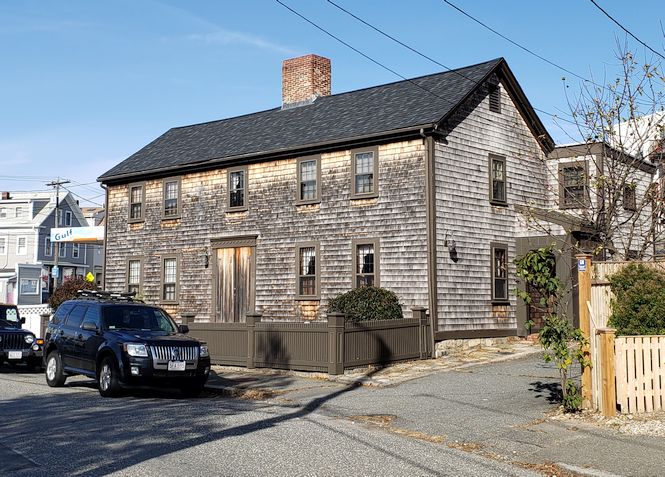
The Bacon-Knight House is a colonial home located at 10-12 Pine Street in Gloucester.
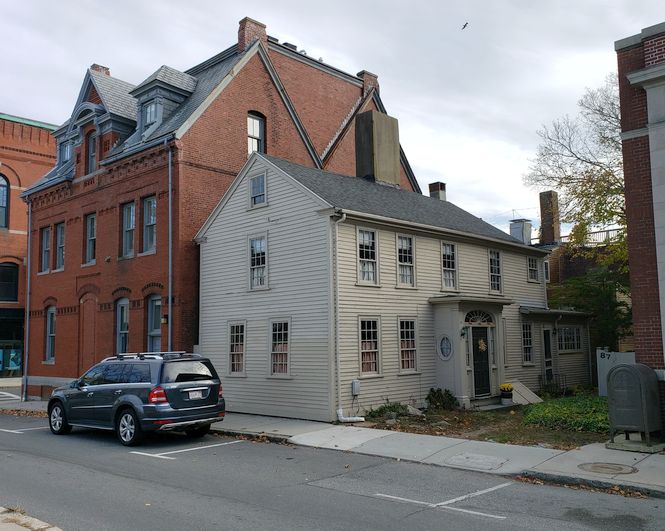
The house at 87 Middle Street in Gloucester (on the right in the image above) was built c. 1785 (or as early as 1718?). In this vicinity in colonial times (possibly where the building on the left, 18 Pleasant Street, stands today) was the well-known barber shop of Rebecca Broome Ingersoll. Her father, James Broome, was also a barber and ran a tavern in the 1750s and 1760s. As related in The Gloucester Book (1921), by Frank L. Cox,
In connection with the tavern he kept a barber shop and his daughter, Rebecca, who became an expert barber carried on the business in a shop at the corner of Pleasant and Middle streets. Her shop was for years the gathering place of all the wits and story tellers in the town. The tavern originally stood at 79 Middle street.
Rebecca Broome married Andrew Ingersoll. Their daughter Rebecca would eventually take over the business from her mother. As related by John J. Babson in his History of the Town of Gloucester, Cape Ann (1860):
She was intelligent and lively; and through her intercourse from childhood with all classes of people, seamen and landmen, acquired a fund of information which made her a very agreeable talker. She last occupied an old house which stood on a lane leading from Front Street to the water-side; and many of our middle-aged people remember the attractions of pictures, birds, and anecdotes, which made the shop of “Aunt Becky” a place of the highest enjoyment in their youthful days.
According to an essay on the “Essex County Dialect” by Helen Mansfield that appeared in the Bulletin of the Essex Institute, Vol. 26, Nos. 7-12 (July-December 1894):
L and n were interchangeable, (m with them, to some extent; Tomlinson, Tumpleson, Tumblesome). Ingersoll was long Inkerson on Gloucester records, and seventy years ago the two forms were co-existent. “Aunt Becky Ingersoll,” a barber with a famous parrot, used to say, “Between Capt. Jack Ingersoll’ and the Inkersons about, there’s a difference.” (They were all of the same stock.) Any man now would sit on the capson of the wharf, instead of the capsill.
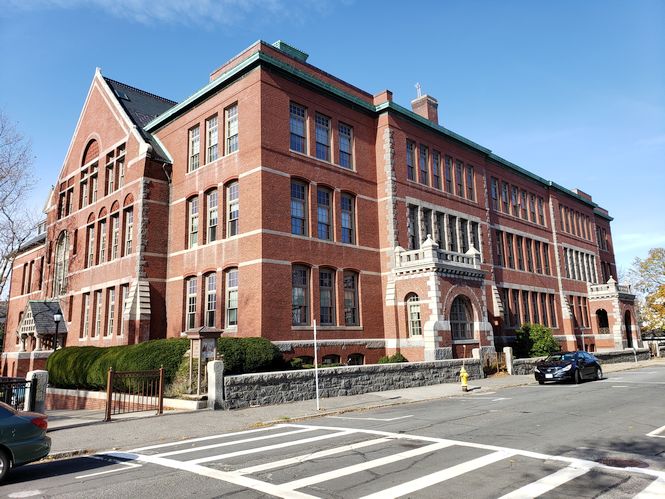
Designed by architect Tristram H. Griffin, Central Grammar School is a former high school building erected in 1889 at 10 Dale Avenue, opposite City Hall in Gloucester. It was the city’s first four-year high school. An 1922 addition, built in a style compatible with the original section, more than doubled the size of the building. In 1974-1975, the building was converted into affordable housing for elderly residents. In 2010, the Central Grammar Apartments received a grant of $2.7 million from the state Department of Housing and Community Development for modernization and renovation.
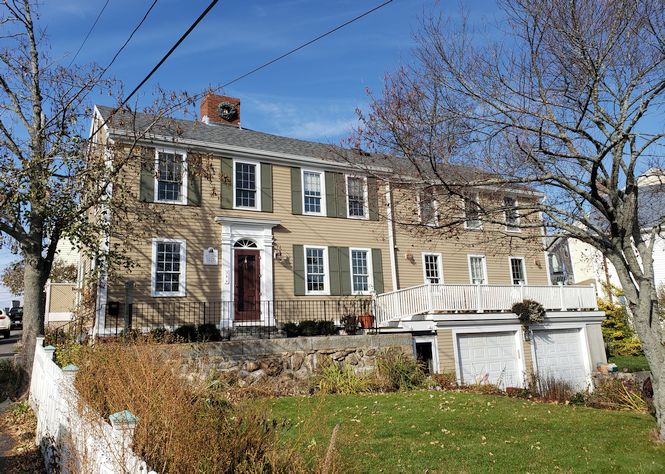
According to the historic marker on the side of the house at 3 Granite Street in Gloucester, it was built c. 1810 and was the home of Jesse Wilson, a housewright. He was also a fireman and a visitor of the Universalist Church. Comparing an image of the house from c. 1969 with its appearance today, it is clear the house has been extensively remodeled and expanded in recent years.
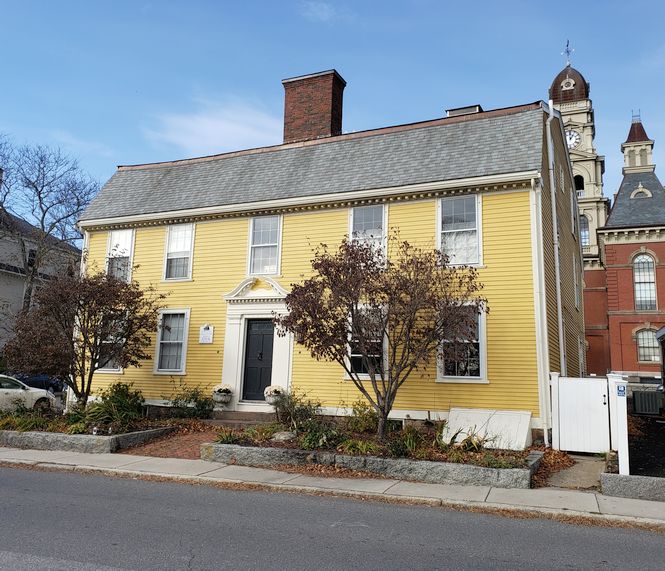
The Hardy-Parsons House at 90 Middle Street in Gloucester was built in 1764 (according to a historic marker on the house) by Capt. William Dolliver, a mariner. The Hardy family occupied the house for many years and, at some point, Judy Millett had a school for small children in the west room of the house. In the mid-twentieth century the house was occupied by Samuel H. Mansfield and his wife, Carrie Esther Parsons Mansfield. They collected works by artist Fitz Henry Lane that are now in the Cape Ann Museum. In 1948, Mrs. Mansfield left the house to the Cape Ann Historical Association. It is now privately owned.
Charles Olson, the poet and resident of Gloucester who railed against the destruction of old buildings wrought by urban renewal, references the Hardy-Parsons House in “Maximus, to Gloucester: Letter 2,” as “the house the street cuts off.” (see also “A Scream to the Editor“).